
January 28, 2025 ⏱️ 6 min
By Cristi P. (RnD – BacknDB)
One important question to be asked when starting a new project or adding a new part to an existing system is: What architecture will best suit my application — Containerized Microservices or Serverless?
On the one hand, Containers provide speed, consistency, and resource efficiency; on the other, Serverless architecture brings in faster launch, flexibility, and superior scalability.
This article will explore this question by comparing and contrasting modern architectural approaches.
What Are Containerized Microservices
Containerized Microservices represent an architecture that cuts applications into small, independently deployable services. This allows applications to be constructed from many smaller services, all packaged and deployed in their container to keep an environment self-contained and run consistently across different environments.
The term microservice suggests that applications should consist of small, focused services, designed to handle a specific concern or function. These services are enclosed in containers that offer isolation and portability. Microservices are designed to scale horizontally, allowing each service to expand independently to meet performance requirements. This enables the entire application, or any of its components, to adapt quickly, ensuring that it can handle changes in demand.
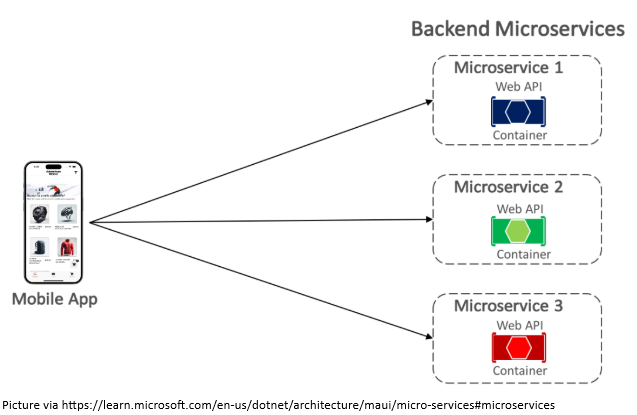
Containerization is an innovative software development methodology whereby a single application is packaged as a container image along with its version dependencies and environment configurations defined in deployment manifest files. This image can then be tested and deployed on a host OS. A container is an isolated, resource-managed, and portable environment for an application that runs independently of other containers or a host system; it behaves like newly configured physical computers or virtual machines.
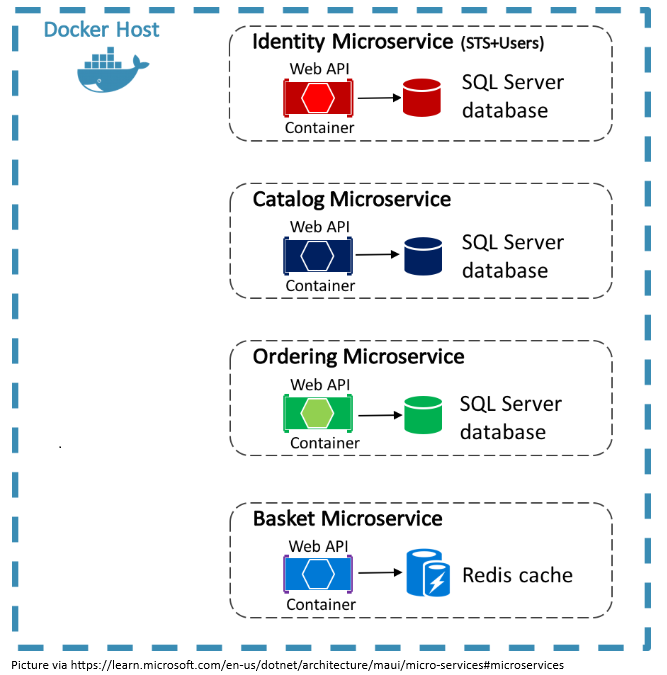
Microservices benefit from fine-grained deployment and management, which are made possible by containerization and Kubernetes orchestration. Containers are virtualized executable images inside a registry, where Kubernetes triggers them as instances within pods (which serve as wrappers for containers) in a cluster.
What Is Serverless Architecture
Serverless computing lets developers create an application faster, by removing the element of server (infrastructure) management. On serverless applications, the cloud provider automatically manages all supply, scaling, and management of infrastructure for running code.
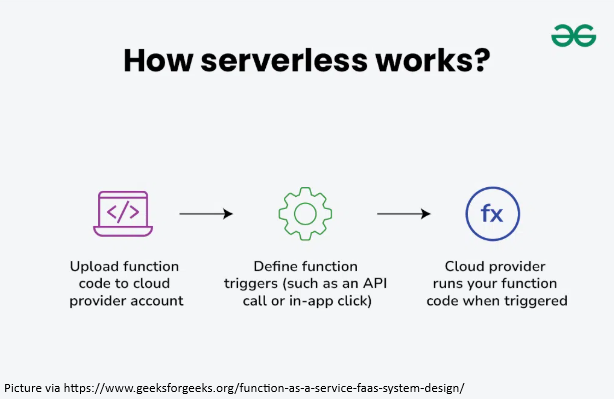
The two major serverless architecture models are:
- Function-as-a-Service (FaaS) – allows developers to run single functions (or small pieces of code) as a response for specific events like HTTP requests, file uploads, or database changes. Examples for FaaS specific platforms are AWS Lambda, Azure Functions, or Google Cloud Functions: a collection of scalable and efficient environments for running serverless functions.
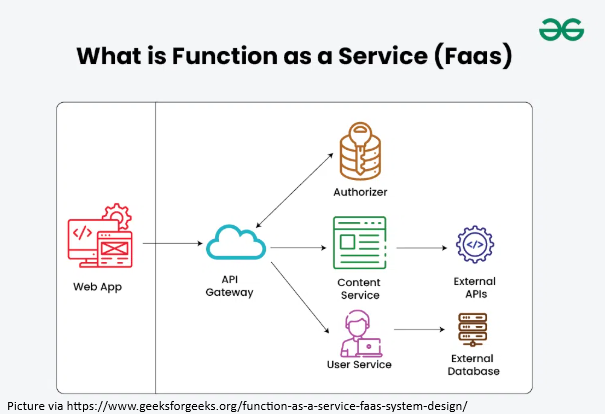
- Backend-as-a-Service (BaaS) – allows developers to connect pre-existing backend functions such as databases, authentication, and storage within apps. There are already well-known Backend-as-a-Service (BaaS), such as Firebase, AWS Amplify, and Backendless, that come with great services and important tools to build real-time databases, complete authentication, store files in the cloud, and manage APIs.
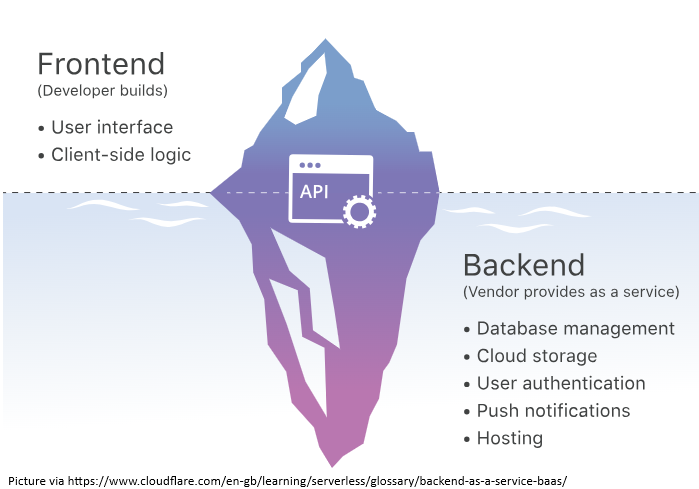
Why Compare These Two
Microservices and Serverless are currently on opposite ends of the architectural spectrum, both treating similar and big challenges in software development – scalability, agility, and cloud-native innovation. The comparison will yield not a win-or-lose verdict, but rather just a clear understanding of each one’s strengths, weaknesses, and ideal use cases.
Core Concepts
Containerized Microservices
-
- Such types of services are modularized and containerized including an entire runtime which guarantees isolation, portability, and consistency across multiple environments.
- These containers are managed by orchestration platforms like Kubernetes, where the main duties include scaling such as managing variable numbers of containers following demand levels and reliability, which offers the ability to keep the services’ intended state despite failure conditions.
- Container registries, like Docker Hub, AWS ECR (Elastic Container Registry), and ACR (Azure Container Registry), are the repositories that store and manage container images. They allow developers to upload, version, and distribute container images into a centralized repository from which orchestration platforms can pull and deploy containers.
Serverless Computing
-
- This event-driven scheme automatically runs a function on the occurrence of a specific event, such as an HTTP request or file upload, to create highly responsive, highly scalable, and event-driven applications.
- No server management, because it is all managed by a cloud vendor: platform, scaling, and resource allocations, even though they impose restrictions on the memory size and execution time of functions.
- This architecture is adequate for use cases, such as processing requests via API requests, events coming from the IoT (Internet of Things), triggers created in the databases, or any fast event generation in real-time data streams, with a requirement for prompt, event-driven responses.
Comparing Key Features
Containerized Microservices
- Scalability: Scale manually with Kubernetes for control
- Cost: Pay for infrastructure, even when idle
- Development Speed: More setup is required for complex apps
- Flexibility: Full control over environment and dependencies (choose any runtime, OS, or framework)
- State Management: Manage state locally or externally
- Vendor Lock-In Risks: Portable across multiple clouds and environments
Serverless Architecture
- Scalability: Auto-scales based on demand
- Cost: Pay only for execution, no cost when idle
- Development Speed: Fast development with minimal setup
- Flexibility: Limited to provider’s supported environments (tools) but simplifies development
- State Management: Stateless, with external state management
- Vendor Lock-In Risks: Tied to specific cloud providers, making migration challenging
Use Cases and Suitability
Choose Containerized Microservices for:
- Complexity: Good for applications with custom networking or persistent storage.
- Performance and Latency: Suitable for applications that require consistent performance and low latency.
- Multi-Cloud Environments: Ideal for multi-cloud and hybrid strategies, affording the greatest flexibility for deployment.
Here are some well-known example of companies using microservices: Spotify, Amazon, eBay, Uber, Netflix.
Choose Serverless for:
- Events Triggered by Application: Good for use cases such as receiving real-time notifications and processing data.
- Highly Variable Traffic App: Good for applications that usually need unpredictable or spiky traffic.
- Rapid Speed of Development: This is good for a startup or teams with limited DevOps experience, facilitating high iteration speed and development.
Some well-known example of companies using serverless architecture are: Netflix, Airbnb, Amazon, Autodesk, Slack.
Challenges
Both containerized microservices and serverless have their strong points and difficulties, and they should be carefully considered before selecting either by the use case. Below is the summary of the top three challenges for each:
Containerized Microservices
- Complex Management: It requires managing multiple services, deployment, and monitoring, especially in large-scale systems.
- State Management: Often managing state across stateless containers needs external storage solutions.
- Infrastructure Overhead: Complexity and resource consumption overhead due to orchestration tools such as Kubernetes.
Serverless
- Cold Starts: Some functions take a while to initiate from rest as they have not been actively running, decreasing performance in some cases.
- Vendor Lock-In: Since they are highly dependent on one cloud provider, migration becomes difficult in case of vendor exit.
- Limited Control: Less flexibility and custom options concerning runtime environment and infrastructure.
Future Trends
Containerized microservices and serverless architectures had initially revolutionized the building and deployment of applications. However, trends are coming into play that would impact the next generation of cloud-native development towards more scalable, efficient, and innovative applications:
- Convergence of Containers and Serverless – Hybrid solutions, such as Kubernetes with a serverless framework such as Knative, are most likely to demolish the boundaries of containers and serverless.
- Expanding of Serverless and Cloud Ecosystem – The cloud ecosystem is expected to be improved by serverless for AI and ML workloads, on-demand events, real-time data it-muses, and edge computing. Cloud providers improve their ecosystems through better tools, lower latency, and multi-cloud capabilities.
- Smarter Orchestration – Microservices adopt excellent failover features, resource optimization engines, and automatic scaling into infrastructure such as that which Kubernetes provides while constantly cutting down on the centimeters between the operation and the mission of developing reliable microservice applications.
The Verdict: Containers vs. Serverless
The difference between containers and serverless comes down to what your application needs:
- Containers are best for needing control, managing complex deployments, and scaling.
- Serverless is where you want speed and low costs without having to think about handling infrastructure.
- A hybrid approach, then you have a balance of both worlds which allows you to achieve the perfect blend of flexibility, scalability, and cost-efficiency.
Make the right choice, and let your application reach its full potential with the architecture that fits its unique needs.





